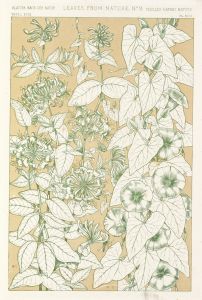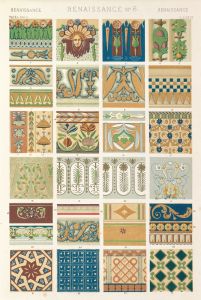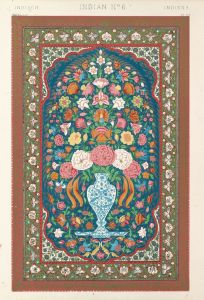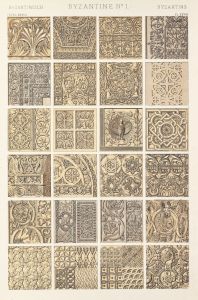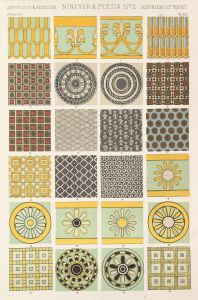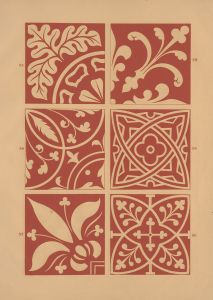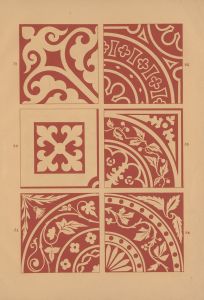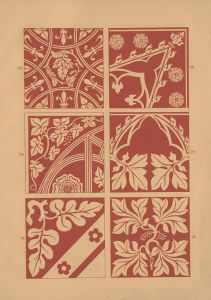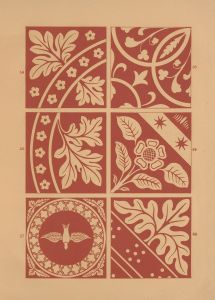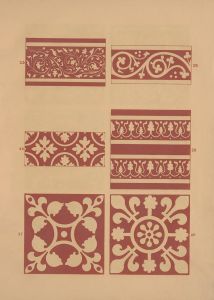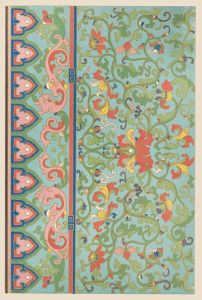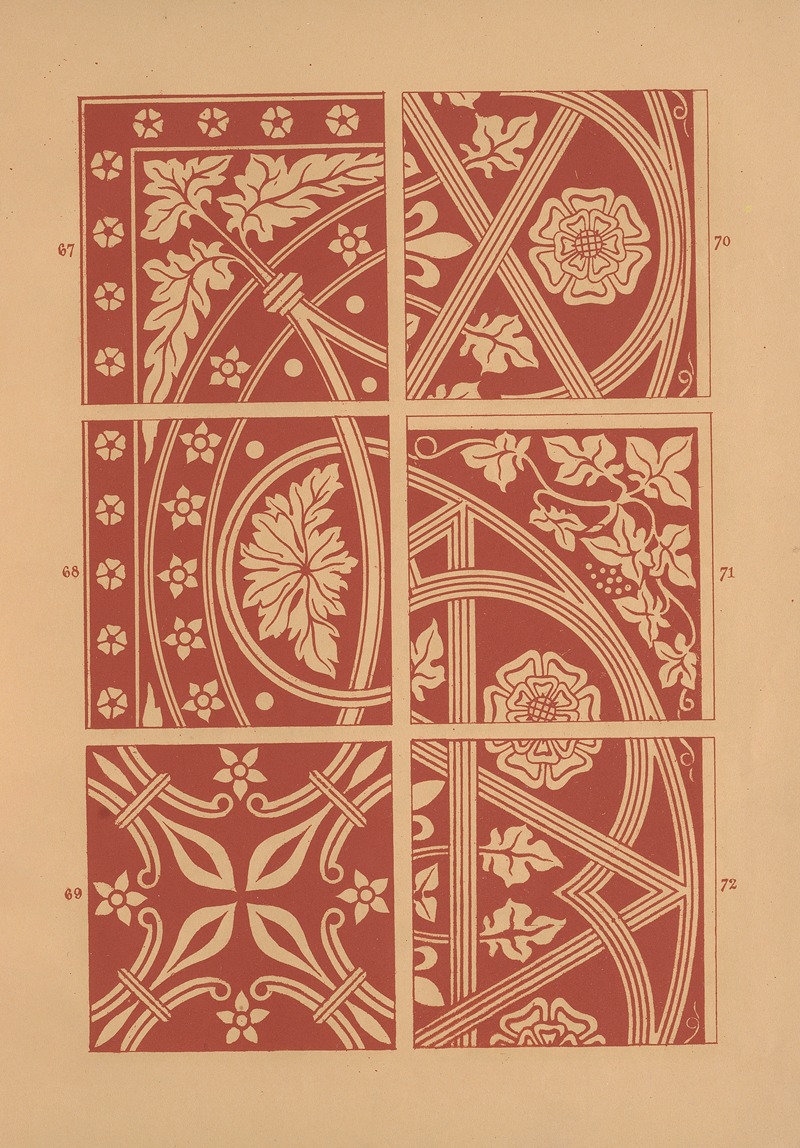
Examples of encaustic tiles Pl.11
A hand-painted replica of Owen Jones’s masterpiece Examples of encaustic tiles Pl.11, meticulously crafted by professional artists to capture the true essence of the original. Each piece is created with museum-quality canvas and rare mineral pigments, carefully painted by experienced artists with delicate brushstrokes and rich, layered colors to perfectly recreate the texture of the original artwork. Unlike machine-printed reproductions, this hand-painted version brings the painting to life, infused with the artist’s emotions and skill in every stroke. Whether for personal collection or home decoration, it instantly elevates the artistic atmosphere of any space.
"Examples of Encaustic Tiles Pl.11" is a notable work by Owen Jones, a prominent British architect and designer of the 19th century. Jones is best known for his influential publication, "The Grammar of Ornament," which was first published in 1856. This comprehensive work is a seminal reference in the field of design, showcasing a wide array of decorative arts from various cultures and historical periods. "Examples of Encaustic Tiles Pl.11" is one of the many plates included in this publication.
Owen Jones was a key figure in the development of design theory during the Victorian era. His work emphasized the importance of studying and understanding historical styles to inform contemporary design practices. "The Grammar of Ornament" is divided into several chapters, each focusing on a different cultural or historical style, such as Egyptian, Greek, Roman, Byzantine, and more. Each chapter is richly illustrated with plates that depict patterns, motifs, and designs characteristic of the style being discussed.
The encaustic tiles featured in Plate 11 are representative of a technique that involves using colored clays to create intricate patterns and designs. This method was particularly popular in the medieval period and saw a revival during the 19th century, partly due to the Gothic Revival movement. Encaustic tiles are known for their durability and vibrant colors, making them a popular choice for flooring and decorative purposes in ecclesiastical and secular buildings.
Jones's depiction of encaustic tiles in "The Grammar of Ornament" highlights his commitment to documenting and preserving traditional crafts and techniques. By including these tiles in his work, Jones not only showcased their aesthetic appeal but also underscored their historical significance. His detailed illustrations and accompanying text provided valuable insights into the methods and materials used in the creation of these tiles, serving as an educational resource for designers and architects of his time and beyond.
The influence of "The Grammar of Ornament" and works like "Examples of Encaustic Tiles Pl.11" extended beyond the 19th century, impacting the fields of design and architecture well into the 20th century. Jones's emphasis on the importance of historical precedent in design continues to be a relevant consideration for contemporary designers. His work serves as a reminder of the rich tapestry of cultural influences that contribute to the evolution of design practices.
In summary, "Examples of Encaustic Tiles Pl.11" by Owen Jones is a significant illustration within "The Grammar of Ornament," reflecting the designer's dedication to documenting historical design techniques and styles. Through his meticulous work, Jones has left an enduring legacy that continues to inspire and inform the world of design today.





